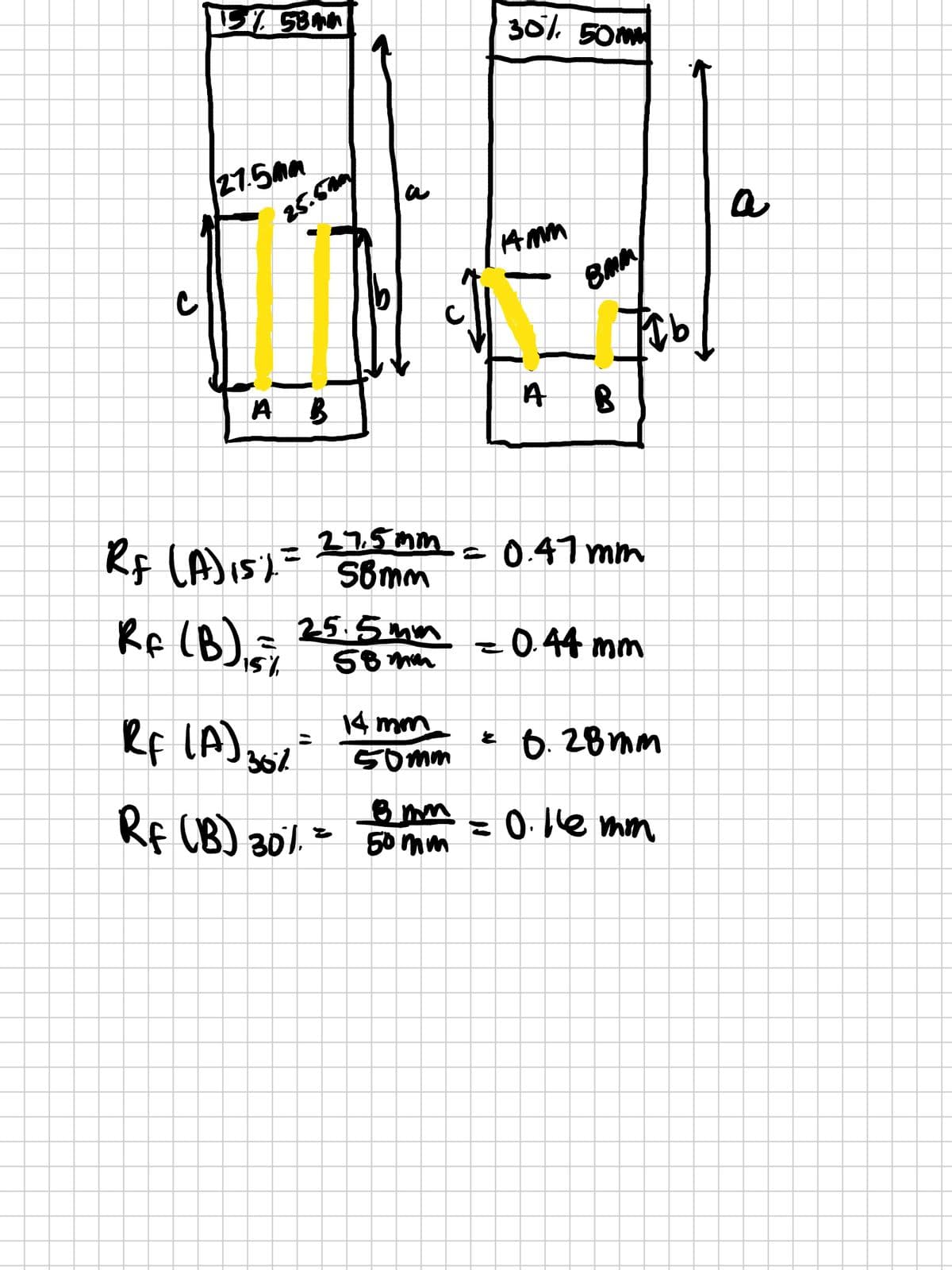This is an illustration of TLC plates. The compounds used were syn-azobenzene (A) and anti-azobenzene (B). The difference between the two plates are that the first was placed in 15% methylene chloride in pet. ether and the second was placed in 30% methylene chloride in pet. ether. I calculated Rf values to be 0.47 mm for syn-azobenzene and 0.44 mm for anti-azobenzene in 15% while syn-azobenze had a Rf of 0.28 mm and 0.16 mm. Which solvent is best at separating and how does Rf help identify which isomer is which? I read that the anti is supposed to have a higher Rf but that is not the case here so I want to know if the syn is supposed to have the higher Rf and the anti is supposed to have the lower one.
This is an illustration of TLC plates. The compounds used were syn-azobenzene (A) and anti-azobenzene (B). The difference between the two plates are that the first was placed in 15% methylene chloride in pet. ether and the second was placed in 30% methylene chloride in pet. ether. I calculated Rf values to be 0.47 mm for syn-azobenzene and 0.44 mm for anti-azobenzene in 15% while syn-azobenze had a Rf of 0.28 mm and 0.16 mm. Which solvent is best at separating and how does Rf help identify which isomer is which? I read that the anti is supposed to have a higher Rf but that is not the case here so I want to know if the syn is supposed to have the higher Rf and the anti is supposed to have the lower one.

Trending now
This is a popular solution!
Step by step
Solved in 2 steps






